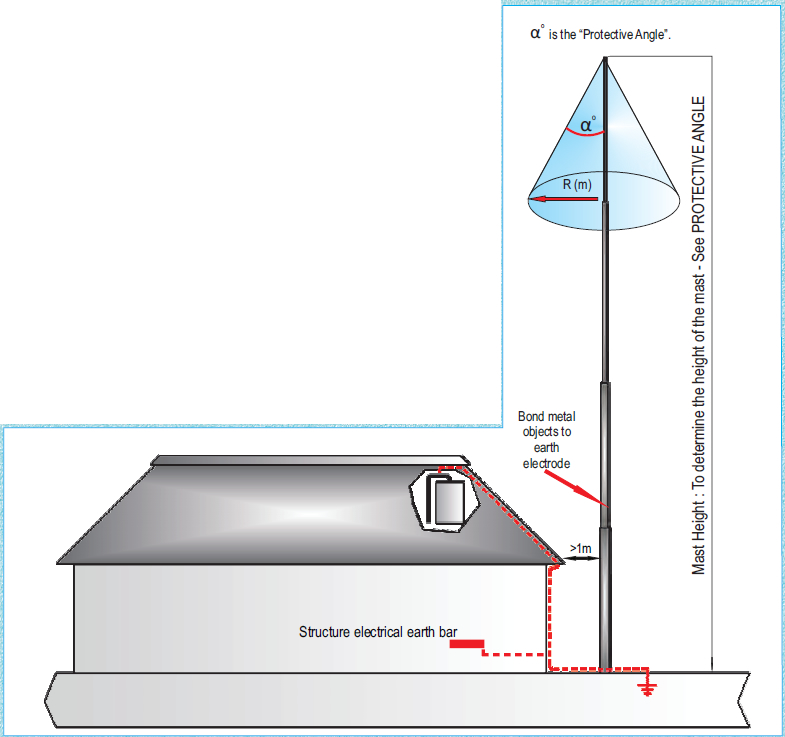LIGHTNING PROTECTION OF THATCH STRUCTURES USING A MAST
Level of protection:
The minimum protection Level III will apply to thatch structures.
Protection shall be arranged by one or more free standing masts.
The zone of protection of the mast(s) shall include gable ends, chimneys, antennas, vent pipes and any other metal object.
Telephone wires, overhead service connections to the electricity supply or other overhead metal wires or pipes shall not enter the structure through the thatch.
The distance from the mast to the thatch shall not be less than 1 m.
Metals in or on thatch:
All metal objects within the structure and electrical conductors should be installed within distances to the air termination system conductors shall comply to the separation distance.
All metal (metal sheeting, mesh, sisolation etc.) installed in or on a thatch structure shall be bonded to the main earth.
Ageing of thatch:
With the aging of thatch, flammable gases could evolve within the thatch and could ignite. Chemical treatment of thatch will not prevent ignition of the gases.
Earthing of masts:
Each mast must have its own earth. Where more than one mast is installed, these masts shall be ‘cross bonded’. Mast earth shall be bonded to the structure’s earth.
The earth resistance shall be < 10 ohms.
Each earth electrode(s) shall comprise:
4 off 1.5m earth rods spaced not closer than their length set in a square and
connected together with 70 BCEW.
OR
1 off crow-foot type earth mat
Testing of installation:
The earth and other considerations shall be inspected and tested on an annual basis.
Protection:
A lightning mast will not provide protection to electrical appliances and electronics housed within the structure. Surge protection (SPD’s) are required to protect these items.

|